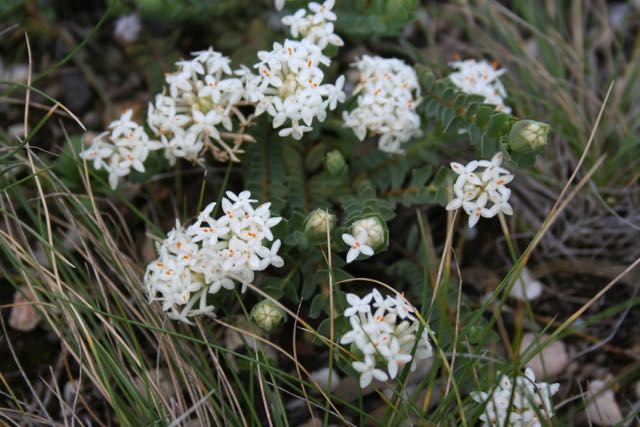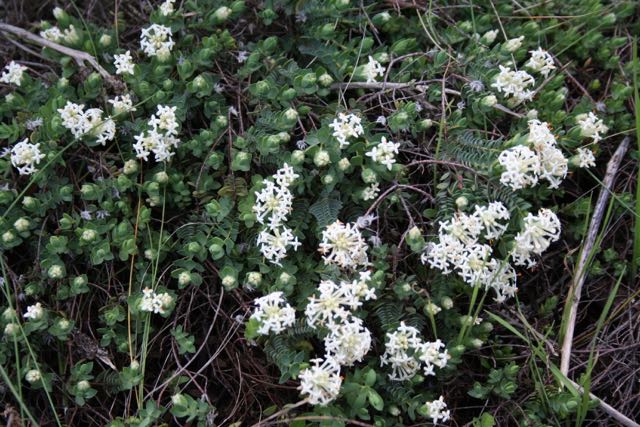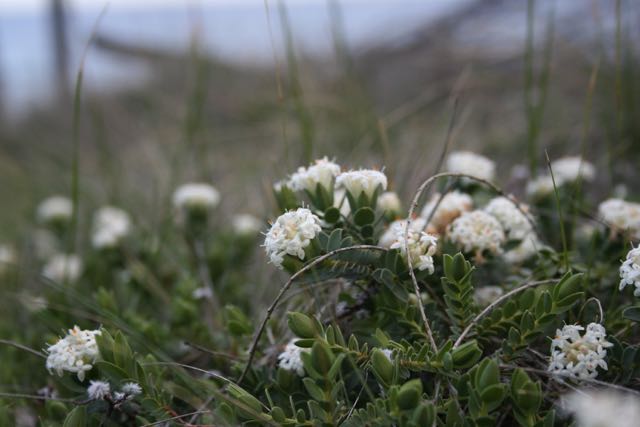



This species is found toward the northern end of the Jan Juc Grassland where it occurs as an erect low-growing sub-shrub and where its suckering habit creates clumps of growth within the grassland.
Foliage is somewhat bluish to grey-green and the leaves are elliptic in shape. New growth is densely hairy. (cf. Smooth Rice-flower [Pimelea glauca] where new growth is without hairs, ie. glabrous).
Masses of fragrant, white flowers are formed in early spring and appear in striking contrast to other grassland species. Flowers are held within bracts that are smooth (glabrous) on the inside (this also being a key difference between it and Smooth Rice-flower which occurs on the cliff-top further south-west and where the inner bracts have hairy margins.)
Indigenous uses as provided by the Wathaurung Aboriginal Corporation: An important plant. The flowers tell the people that certain seabirds have arrived to lay eggs and the inner bark is used for making a fine string for fishing lines and nets.
Both sides of the leaf are one colour